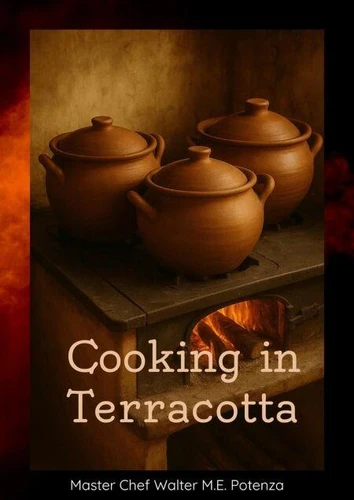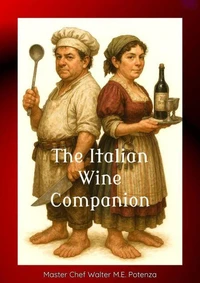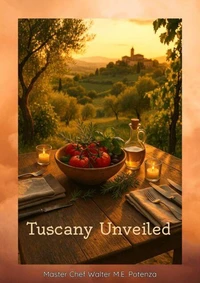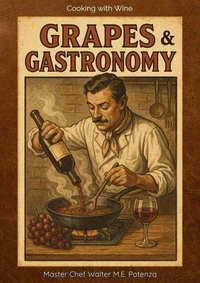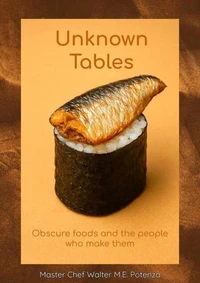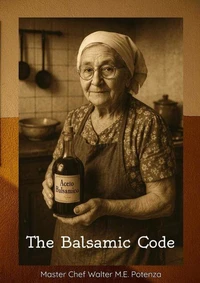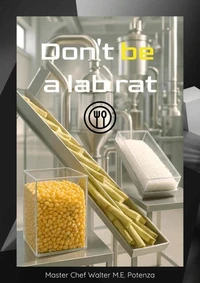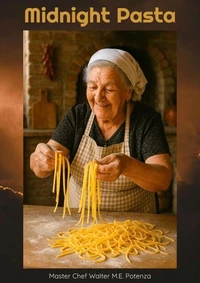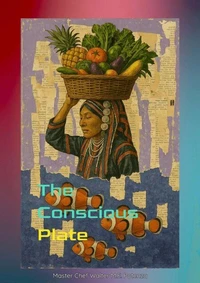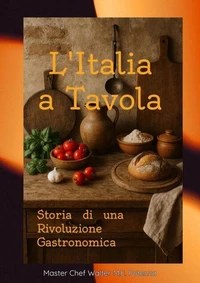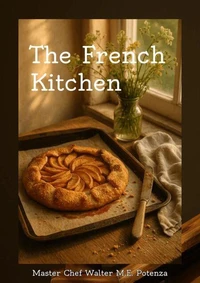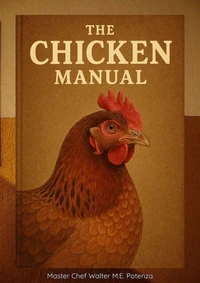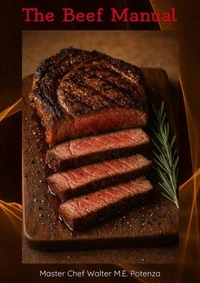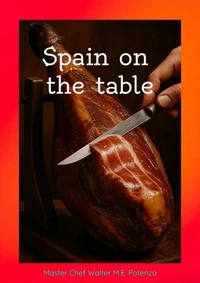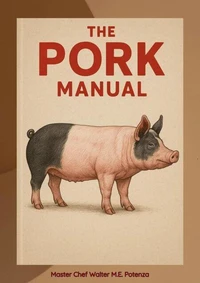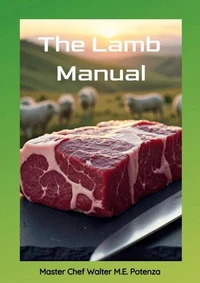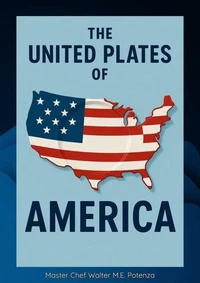Nouveauté
Cooking in Terracotta. Cooking in Terracotta, #1
Par :Formats :
Disponible dans votre compte client Decitre ou Furet du Nord dès validation de votre commande. Le format ePub est :
- Compatible avec une lecture sur My Vivlio (smartphone, tablette, ordinateur)
- Compatible avec une lecture sur liseuses Vivlio
- Pour les liseuses autres que Vivlio, vous devez utiliser le logiciel Adobe Digital Edition. Non compatible avec la lecture sur les liseuses Kindle, Remarkable et Sony
 , qui est-ce ?
, qui est-ce ?Notre partenaire de plateforme de lecture numérique où vous retrouverez l'ensemble de vos ebooks gratuitement
Pour en savoir plus sur nos ebooks, consultez notre aide en ligne ici
- FormatePub
- ISBN8232268275
- EAN9798232268275
- Date de parution18/09/2025
- Protection num.pas de protection
- Infos supplémentairesepub
- ÉditeurHamza elmir
Résumé
Cooking in Terracotta A Historical Journey and Culinary Guide to the World's Oldest Cooking VesselHow Chef Walters "Terraware" was created in the United States, becoming the first terracotta cooking vessels entirely produced in the country. This book thoroughly examines the intriguing history and evolution of terracotta cookware, tracing its origins from Neolithic societies to its significant role in ancient cultures, including those of Mesopotamia, the Indus Valley, and Egypt.
It underscores the transformative process of shaping ordinary clay into durable cooking vessels that revolutionized food preparation and storage methods, representing a considerable advancement in culinary technology. Readers are invited to engage in a global exploration of diverse terracotta designs, such as the Roman testum, Indian handi, Spanish cazuela, Maghrebi tagine, and Italian pignatta. Each variant is analyzed for its particular functionality and cultural significance, illustrating how these artifacts embody the dietary practices and cooking methodologies of their corresponding societies. The book also delves into the scientific principles underlying the unique characteristics of terracotta.
Its porous structure facilitates gentle heat distribution that enhances moisture retention while averting the burning of food-contrasting markedly with the extreme heat associated with metal cookware. This "slow breath" of terracotta not only intensifies flavors but also tenderizes meats and cooks grains and legumes to perfection. Moreover, it highlights the crucial relationship between the cook and the pot, providing practical guidance on seasoning techniques to prevent cracking, heating methods to mitigate thermal shock, and traditional care practices to preserve the vessel's integrity over time.
In addition to theoretical insights, readers will discover adapted recipes crafted to showcase terracotta's capabilities, such as preparing ancient stews or baking rustic breads. The narrative concludes by addressing contemporary trends wherein chefs and home cooks are increasingly rediscovering terracotta cookware for its authenticity and health advantages. The discussion further encompasses sustainability issues related to natural materials versus modern non-stick alternatives, while illustrating how this time-honored practice can reconnect individuals with their culinary heritage.
It underscores the transformative process of shaping ordinary clay into durable cooking vessels that revolutionized food preparation and storage methods, representing a considerable advancement in culinary technology. Readers are invited to engage in a global exploration of diverse terracotta designs, such as the Roman testum, Indian handi, Spanish cazuela, Maghrebi tagine, and Italian pignatta. Each variant is analyzed for its particular functionality and cultural significance, illustrating how these artifacts embody the dietary practices and cooking methodologies of their corresponding societies. The book also delves into the scientific principles underlying the unique characteristics of terracotta.
Its porous structure facilitates gentle heat distribution that enhances moisture retention while averting the burning of food-contrasting markedly with the extreme heat associated with metal cookware. This "slow breath" of terracotta not only intensifies flavors but also tenderizes meats and cooks grains and legumes to perfection. Moreover, it highlights the crucial relationship between the cook and the pot, providing practical guidance on seasoning techniques to prevent cracking, heating methods to mitigate thermal shock, and traditional care practices to preserve the vessel's integrity over time.
In addition to theoretical insights, readers will discover adapted recipes crafted to showcase terracotta's capabilities, such as preparing ancient stews or baking rustic breads. The narrative concludes by addressing contemporary trends wherein chefs and home cooks are increasingly rediscovering terracotta cookware for its authenticity and health advantages. The discussion further encompasses sustainability issues related to natural materials versus modern non-stick alternatives, while illustrating how this time-honored practice can reconnect individuals with their culinary heritage.
Cooking in Terracotta A Historical Journey and Culinary Guide to the World's Oldest Cooking VesselHow Chef Walters "Terraware" was created in the United States, becoming the first terracotta cooking vessels entirely produced in the country. This book thoroughly examines the intriguing history and evolution of terracotta cookware, tracing its origins from Neolithic societies to its significant role in ancient cultures, including those of Mesopotamia, the Indus Valley, and Egypt.
It underscores the transformative process of shaping ordinary clay into durable cooking vessels that revolutionized food preparation and storage methods, representing a considerable advancement in culinary technology. Readers are invited to engage in a global exploration of diverse terracotta designs, such as the Roman testum, Indian handi, Spanish cazuela, Maghrebi tagine, and Italian pignatta. Each variant is analyzed for its particular functionality and cultural significance, illustrating how these artifacts embody the dietary practices and cooking methodologies of their corresponding societies. The book also delves into the scientific principles underlying the unique characteristics of terracotta.
Its porous structure facilitates gentle heat distribution that enhances moisture retention while averting the burning of food-contrasting markedly with the extreme heat associated with metal cookware. This "slow breath" of terracotta not only intensifies flavors but also tenderizes meats and cooks grains and legumes to perfection. Moreover, it highlights the crucial relationship between the cook and the pot, providing practical guidance on seasoning techniques to prevent cracking, heating methods to mitigate thermal shock, and traditional care practices to preserve the vessel's integrity over time.
In addition to theoretical insights, readers will discover adapted recipes crafted to showcase terracotta's capabilities, such as preparing ancient stews or baking rustic breads. The narrative concludes by addressing contemporary trends wherein chefs and home cooks are increasingly rediscovering terracotta cookware for its authenticity and health advantages. The discussion further encompasses sustainability issues related to natural materials versus modern non-stick alternatives, while illustrating how this time-honored practice can reconnect individuals with their culinary heritage.
It underscores the transformative process of shaping ordinary clay into durable cooking vessels that revolutionized food preparation and storage methods, representing a considerable advancement in culinary technology. Readers are invited to engage in a global exploration of diverse terracotta designs, such as the Roman testum, Indian handi, Spanish cazuela, Maghrebi tagine, and Italian pignatta. Each variant is analyzed for its particular functionality and cultural significance, illustrating how these artifacts embody the dietary practices and cooking methodologies of their corresponding societies. The book also delves into the scientific principles underlying the unique characteristics of terracotta.
Its porous structure facilitates gentle heat distribution that enhances moisture retention while averting the burning of food-contrasting markedly with the extreme heat associated with metal cookware. This "slow breath" of terracotta not only intensifies flavors but also tenderizes meats and cooks grains and legumes to perfection. Moreover, it highlights the crucial relationship between the cook and the pot, providing practical guidance on seasoning techniques to prevent cracking, heating methods to mitigate thermal shock, and traditional care practices to preserve the vessel's integrity over time.
In addition to theoretical insights, readers will discover adapted recipes crafted to showcase terracotta's capabilities, such as preparing ancient stews or baking rustic breads. The narrative concludes by addressing contemporary trends wherein chefs and home cooks are increasingly rediscovering terracotta cookware for its authenticity and health advantages. The discussion further encompasses sustainability issues related to natural materials versus modern non-stick alternatives, while illustrating how this time-honored practice can reconnect individuals with their culinary heritage.

